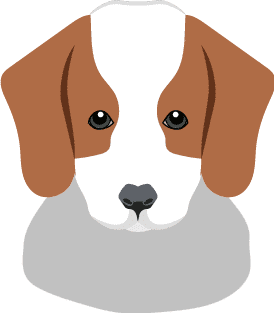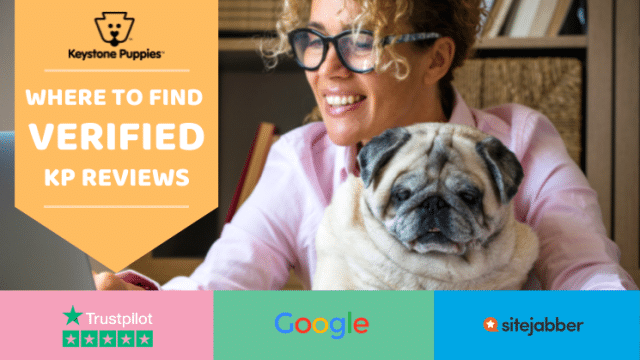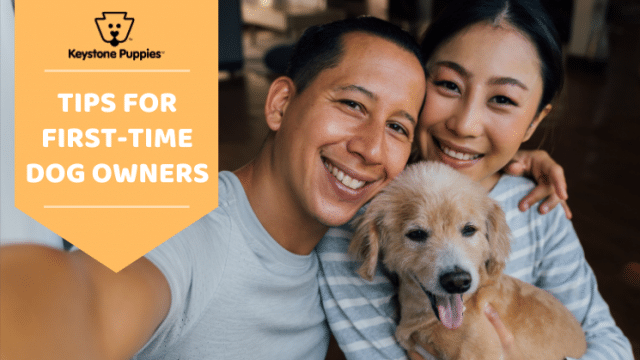Essential Puppy Proofing Tips & Mistakes To Avoid
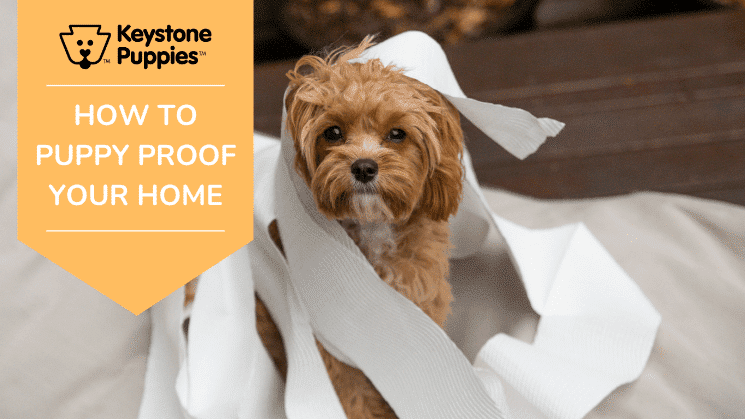
Welcoming a new furry friend to your home is an amazing time but comes with many responsibilities. One of the most important things to do before your puppy comes home is to make sure your house is safe and secure so that your dog does not get into items, or foods that are toxic to dogs.
In this blog we’ll show you how to keep your puppy out of harm’s way to prevent potential accidents or a trip to the vet:
Understanding Your Puppy’s Behavior
All puppies have unique personalities! It’s important to monitor your pet’s adolescence behavior so that you are prepared for even the unexpected.
- Chewing: Chewing is a very natural behavior that puppies exhibit during the start of their little lives. Dogs chew out of curiosity and the discomfort of teething. Depending on how to train your puppy, some pups may chew more than others.
Commonly chewed items: Furniture, shoes, game controllers & remotes, socks - Curiosity and adventure: It’s a whole new world for Fido so of course they’re going to explore! Your puppy will use their mouth, nose, and paws to explore so it’s best to monitor their behavior and respond accordingly.
Common exploratory behaviors: digging holes, relieving themselves in the house, knocking over trash cans, playing with plants, getting stuck under furniture. - Socialization: Socializing your puppy is a good way to get them exposed to other humans and pets. This can help eliminate the chances of bad dog behavior such as consistent barking or biting. If you’re looking for a leash perfect for socialization, our friends at Bark Box are offering a FREE, hands-free dog leash with every 6 or 12 month subscription!
- Separation Anxiety: It’s common that puppies experience separation anxiety, which can lead to more than just crying at the front door. Chewing and getting into things they shouldn’t are very common.
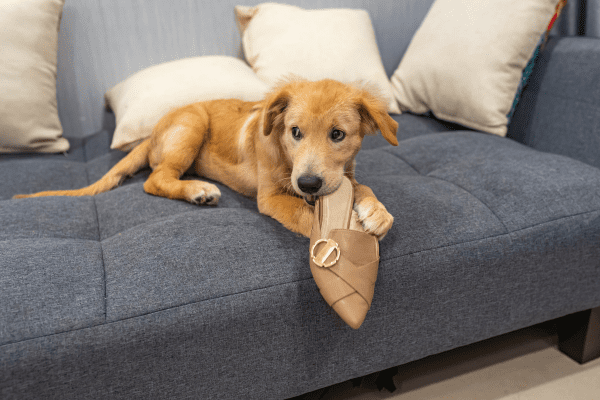
Essential Puppy Proofing Tips
Hiding your favorite pair of shoes may not be enough to deter your puppy from finding them as a chew toy. Here are some puppy proofing tips for commonly trekked areas at home.
Living room
- Electrical cords: Make sure you stash your cords into a cord protector as your puppy may view these cords as a chewing rope.
- Choking hazards: Keep kids’ toys and other small items off the floor to decrease the risk of your puppy choking or getting hurt.
- Gates: Place baby or pet centric gates in areas that you do not want your furry friend to access. Having them at the top of steps is smart, too, since puppy legs aren’t fully grown, making their chances of falling a bit high.
Furniture covers – Investing in furniture covers will help eliminate damage due to chewing, scratching, or even muddy paws on a rainy day.
Kitchen
- Trash: A very common go-to for dogs, make sure you have a sturdy trash can with a lid that does not open easily.
- Kitchen cabinets: Never keep your kitchen cabinets open as cleaning products may be stored at eye level.
- Floors: Make sure you sweep and inspect your kitchen floor in case of scraps that could potentially be life-threatening to your puppy.
Yard
- Fencing: If you have a fenced in yard, inspect it before you get a puppy so that they are secure to prevent any chances of escaping
- Plants: Some plants are toxic to dogs so it’s best to remove them from your outdoor area.
- Grounds: Check your yard for holes (not dug from your puppy) to decrease the chances of them, and you, from falling down. Inspect areas where there can be potential bees, so that your puppy doesn’t get a kiss from a stinging insect.
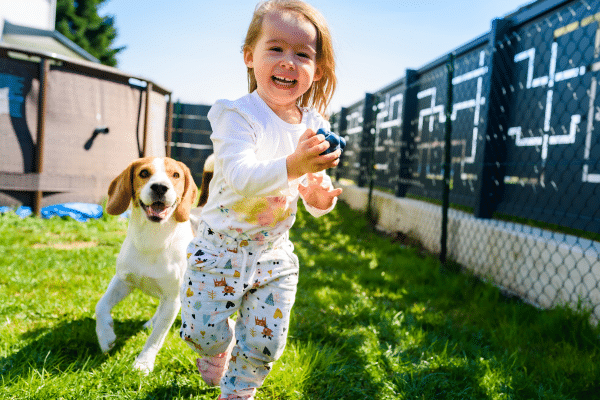
Puppy Proofing mistakes
Understanding your dog’s abilities will help you better prepare when it comes to making a puppy proof home.
- Underestimating: Sometimes dog owners can underestimate their dogs abilities, especially their jumping height. It’s best to monitor your dog’s behavior so that it’s easier to understand what they like and tend to gravitate towards.
- Leaving items behind: The most common mistake when it comes to puppy proofing a home is leaving items around the house. The most common culprits are houseplants and toys with sharp edges. Regularly inspect your home to prevent a potential trip to the veterinarian.
The importance of training
Puppy-proofing a home is an important step, but training is just as important. Understanding your dog’s breed-specific behaviors and investing time in training your puppy can reduce the likelihood of misbehavior and make for a real puppy-proof home.
Looking for a new paw-some friend? Check out our new puppies today!

